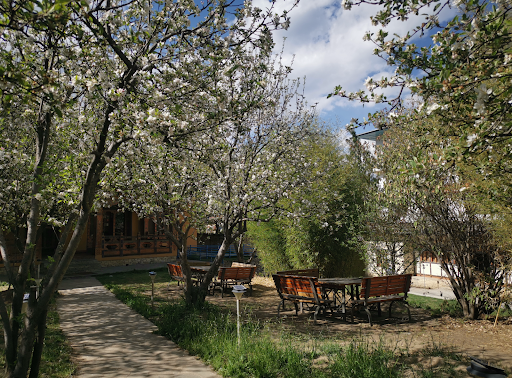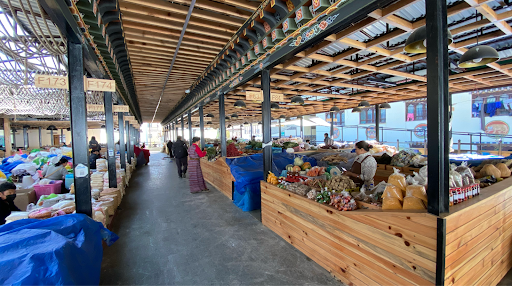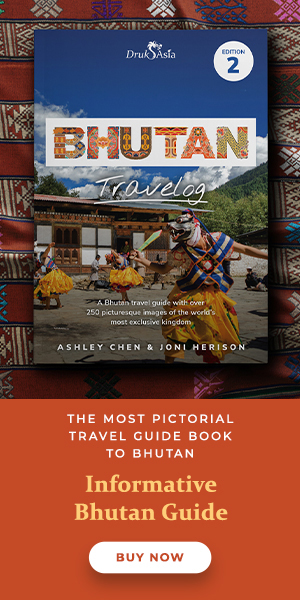BHUTAN
Travelog
Exploring Thimphu: The Ultimate Guide to Bhutan’s Most Enchanting Capital

Thimphu, the heart of Bhutan, is a city unlike any other. Imagine a capital where traffic lights don’t exist, where tradition blends seamlessly with modernity, and where prayer flags flutter against a backdrop of stunning Himalayan peaks. If you’re planning a trip to Bhutan, Thimphu is a must-visit, offering a mix of cultural, historical, and natural attractions that will leave you enchanted.
This ultimate guide to Thimphu covers everything you need to know: the best attractions, cultural experiences, practical travel tips, and must-know details like opening hours and entrance fees.
Why Visit Thimphu?
-
Rich Cultural Heritage: Home to dzongs, monasteries, and museums.
-
Unique Blend of Old & New: Traditional Bhutanese architecture meets modern cafes and shopping streets.
-
Scenic Beauty: Surrounded by lush green valleys and Himalayan views.
-
Vibrant Local Life: Bustling markets, friendly locals, and a deep spiritual essence.
Top Attractions in Thimphu
1. Tashichho Dzong (Thimphu Dzong)
One of Bhutan’s most iconic landmarks, this grand fortress-monastery houses the King’s office and important government offices. It also serves as the summer residence of the Je Khenpo (Chief Abbot).
-
Opening Hours: 9:00 AM - 5:00 PM (Weekdays), 5:30 PM - 6:30 PM (Weekends for tourists)
-
Entrance Fee: Free (but a guide is required for non-Bhutanese tourists)
-
Highlights: Stunning Bhutanese architecture, beautifully landscaped gardens, and an impressive golden-roofed assembly hall.

2. Buddha Dordenma Statue
Perched atop a hill in Kuenselphodrang Nature Park, this massive 51-meter-tall golden Buddha statue is visible from almost anywhere in Thimphu.
-
Opening Hours: 9:00 AM - 5:00 PM
-
Entrance Fee: Free
-
Highlights: Breathtaking panoramic views of Thimphu Valley, serene atmosphere, and over 100,000 small Buddha statues inside.

3. Motithang Takin Preserve
Ever heard of the takin? This unusual-looking animal is Bhutan's national animal. The preserve, set amidst beautiful forested hills, provides a safe habitat for these unique creatures.
-
Opening Hours: 9:00 AM - 4:30 PM
-
Entrance Fee: BTN 300 (~$4) for foreigners
-
Highlights: Close-up encounters with takins, peaceful nature trails, and scenic viewpoints.

4. National Memorial Chorten
A sacred monument built in memory of Bhutan’s third king, this chorten is an important place of daily worship for locals.
-
Opening Hours: 6:00 AM - 6:00 PM
-
Entrance Fee: BTN 300 (~$4) for foreigners
-
Highlights: Traditional Bhutanese architecture, spiritual ambiance, and an opportunity to witness local prayer rituals.
5. Changangkha Lhakhang
A 12th-century monastery that offers not only spiritual blessings but also some of the best views over Thimphu.
-
Opening Hours: 8:00 AM - 6:00 PM
-
Entrance Fee: Free
-
Highlights: Beautiful murals, peaceful courtyard, and a special blessing from resident monks.
6. Folk Heritage Museum
Step back in time and see what life was like in a traditional Bhutanese home.
-
Opening Hours: 9:00 AM - 4:30 PM (Closed on Sundays)
-
Entrance Fee: BTN 300 (~$4) for foreigners
-
Highlights: Traditional farmhouses, household artifacts, and cultural demonstrations.

7. Royal Textile Academy & Museum
Bhutan is famous for its textiles, and this museum showcases some of the finest weaving traditions in the country.
-
Opening Hours: 9:00 AM - 4:30 PM (Closed on Sundays)
-
Entrance Fee: BTN 250 (~$3.50) for foreigners
-
Highlights: Intricate woven fabrics, live weaving demonstrations, and exhibits on royal attire.

8. Centenary Farmers Market
A lively market that brings together local farmers and vendors selling fresh produce, handicrafts, and traditional Bhutanese snacks.
-
Opening Hours: Monday - Saturday: 9am - 4pm
Sunday: 24 hours -
Entrance Fee: Free
-
Highlights: Authentic Bhutanese food, handicrafts, and a chance to mingle with locals.

9. Simply Bhutan Museum
An interactive museum that gives you a hands-on experience of Bhutanese culture.
-
Opening Hours: 9:00 AM - 5:00 PM
-
Entrance Fee: BTN 300 (~$4) for foreigners
-
Highlights: Traditional architecture, cultural performances, and a chance to try Bhutanese archery.

10. Dochula Pass
A scenic mountain pass located about 45 minutes from Thimphu, featuring 108 stupas and jaw-dropping Himalayan views.
-
Opening Hours: Accessible any time
-
Entrance Fee: Free
-
Highlights: Stunning sunrise views, breathtaking landscapes, and historical significance.

Practical Travel Tips
-
Best Time to Visit Bhutan: Spring (March-May) and Autumn (September-November) for the best weather and festivals.
-
Getting Around: Taxis are the most common form of transport. Walking is also a great option in central Thimphu. If you're booking a Bhutan package through a tour agency (highly recommended!), you'll not need to worry about transportation as you'll be provided with a guide and driver.
-
Currency: Bhutanese Ngultrum (BTN) and Indian Rupees (INR) (except for INR 2000 notes, which are not accepted).
-
SIM Cards & Internet: Tourist SIM cards are available at Paro International Airport and Thimphu town.
-
Electricity: 230V, with three-pronged plugs (Type D & Type G).
-
Dress Code: Modest clothing is recommended when visiting religious sites.
Food & Dining in Thimphu
Don’t leave without trying these Bhutanese delicacies:
-
Ema Datshi (chilli & cheese stew)
-
Momos (dumplings)
-
Phaksha Paa (pork with red chillies)
-
Suja (butter tea)
-
Ara (traditional rice wine)
Popular restaurants include:
Best Restaurants in Thimphu
- Babesa Village Restaurant – Step into a 600-year-old heritage home transformed into a charming restaurant, serving traditional Bhutanese cuisine in an authentic setting. A must-visit for history and food lovers alike.
- Ambient Café – A cosy and popular spot known for its excellent coffee, homemade pastries, and relaxed ambiance—perfect for a quiet afternoon in Thimphu.
- Chig-Ja-Gye at Pemako Thimphu – A refined dining experience offering a sophisticated take on Bhutanese cuisine, set in an elegant atmosphere ideal for a special meal.
- Folk Heritage Restaurant – A fantastic place to savour traditional Bhutanese dishes prepared with fresh, local ingredients, offering a true taste of Bhutanese culture.
- Zombala 2 – Famous for its delicious momos (dumplings) and spicy Bhutanese fare, this casual eatery is a favourite among both locals and travellers.
Want to explore more of Thimphu's nightlife? Check out the best bars in Thimphu.
Best Bars in Thimphu
- Drunken Yeti – A lively bar with a laid-back vibe, serving signature cocktails like the popular ‘Moscow Mule’ and ‘Piña Colada’—a great place to unwind.
- Urban Dumra – Bhutan’s first beer garden, offering a relaxed outdoor setting where you can sip on local brews while playing pool with friendly locals.
- O’ Cafe and Bar – A versatile venue that transforms from a cosy café by day into a buzzing bar with live music and entertainment at night.
- The Alchemy – A trendy nightlife spot famous for its creative cocktails, including the Instagram-worthy ‘Syringe Shot’.
- The Pema by Realm – Enjoy handcrafted cocktails and panoramic views at this stylish rooftop lounge, set in Thimphu’s award-winning 4-star boutique hotel.
Thimphu is a city that captures the essence of Bhutanese culture while offering a comfortable and unique travel experience. Whether you’re exploring its ancient monasteries, hiking to breathtaking viewpoints, or simply enjoying a stroll through its lively streets, you’re bound to fall in love with this charming capital.
Planning a Bhutan trip? Get expert's advice to plan the perfect Bhutan tour!
Follow Druk Asia on social media for inspiring travel stories, breathtaking photos, and the latest updates from Bhutan.
Ready to Experience the Magic of Bhutan?
Fill in the form below and the friendly Bhutan Travel Specialist team will get back to you with expert advice, itinerary ideas, and everything you need to know. No obligations, just warm guidance from those who know Bhutan best.
Thank you for your message!
Hang tight—one of our friendly Bhutan Travel Specialists from Druk Asia will be reaching out soon with expert tips, insider advice, and exciting itinerary ideas to help you plan the adventure of a lifetime!
Discover
Breathtaking
Bhutan.
Thank you for subscribing!
You have successfully subscribed to our newsletter.




